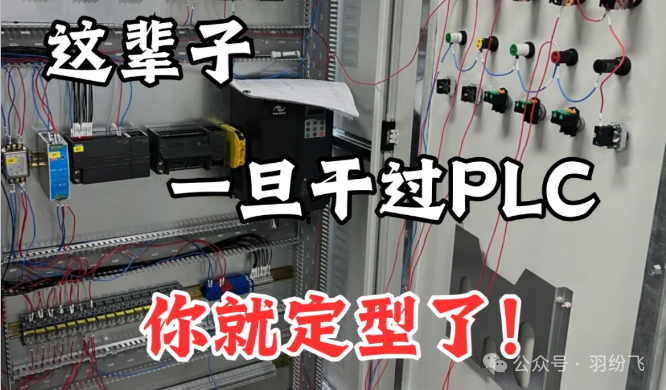
Intermediate PLC Programming: Interrupt Priority Design for Timely Response to Critical Tasks!
Introduction
Hello everyone! Today I want to share a magical technique that can make your PLC program “perceptive” — interrupt priority design. Don’t worry about the technical jargon; I will explain this seemingly profound concept in the most relatable way. By mastering this technique, your PLC can accurately determine which tasks need immediate attention and which can be executed later, ensuring that critical tasks are always responded to promptly! Want to know how this is achieved? Let’s explore together!
What is Interrupt Priority?
Imagine you are a waiter in a restaurant, facing the demands of several tables: some want to order more dishes, some want to pay the bill, and someone has spilled a drink. Which one will you handle first? A smart waiter would certainly address the spilled drink emergency first, then the bill, and finally the additional orders. This is priority judgment!
In a PLC, interrupt priority works similarly. It determines which interrupt request the processor should respond to first when multiple events occur simultaneously. Just like the triage system in a hospital, ensuring that patients with cardiac arrest receive faster treatment than those with a cold or fever.
Why is Interrupt Priority So Important?
You might ask, “My PLC program has always executed in order without any issues, right?” Let me illustrate the consequences of chaotic priorities with a few gruesome examples:
-
Safety Risks: A packaging machine caused an operator injury because the emergency stop signal was delayed by regular I/O scanning. If the emergency stop signal had been set as the highest priority interrupt, the tragedy could have been avoided!
-
Production Losses: An automated production line failed to process a communication interruption in time, resulting in a batch of products being scrapped. If the communication fault detection had been set to high priority, the system could have immediately entered a safe mode.
-
Equipment Damage: A motor temperature alarm was blocked by regular program execution, failing to shut down in time, leading to motor burnout.
Methods for Implementing Interrupt Priority
Different brands of PLCs have slightly different implementation methods, but the core principles are similar. Here are a few common methods:
1. Hardware Interrupt Levels (Example: Siemens S7-1200)
// Set hardware interrupt priorities
ATTACH(INT_0, "Emergency Stop Handling", 16); // Highest priority 16
ATTACH(INT_1, "Temperature Alarm", 8); // Medium priority 8
ATTACH(INT_2, "Communication Detection", 4); // Normal priority 4
2. Software Interrupt Management (Mitsubishi FX Series)
// Set interrupt priorities via special registers
MOV K3 D8120 // Set serial port interrupt to priority 3
MOV K1 D8121 // Set high-speed counter interrupt to priority 1 (highest)
3. Interrupt Nesting (Omron CP1 Series)
// Allow high-priority interrupts to interrupt low-priority interrupts
SET INTERRUPT_NESTING ON;
Practical Application Case
After implementing interrupt priority design in an automotive welding production line, the results were astonishing:
-
Emergency Stop Signal: Priority 16 (highest), response time reduced from 50ms to <1ms
-
Robot Collision Detection: Priority 12, response time <5ms
-
Quality Inspection Signal: Priority 8, response time <20ms
-
Regular I/O Scanning: Priority 0 (lowest), cycle 100ms
Result: Critical fault response speed improved by 98%, equipment downtime reduced by 75%, and annual maintenance cost savings exceeded 500,000 yuan!
Golden Rules for Designing Interrupt Priorities
Based on years of experience, I have summarized several “absolute must-follow” principles for priority design:
-
Safety First: All signals related to personal safety (emergency stop, light curtains, etc.) must be set to the highest priority.
-
Equipment Protection Second: Signals that may damage equipment, such as temperature, pressure, and vibration, should be set to the second highest priority.
-
Production Quality Third: Signals affecting product quality should be set to medium priority.
-
Regular I/O Last: Conventional digital and analog processing should be set to the lowest priority.
Remember this mantra: Human Life > Equipment > Quality > Efficiency
Common Issues and Solutions
When implementing interrupt priority design, you may encounter these issues:
-
Interrupt Conflicts: What to do if multiple high-priority interrupts occur simultaneously?
- Solution: Use an interrupt queue mechanism, serving first-come, first-served or setting sub-priorities.
-
Interrupt Loss: Low-priority interrupts are not executed for a long time?
- Solution: Set up a timeout priority boost mechanism, automatically upgrading interrupts that have not been processed for a long time.
-
Program Chaos: Long interrupt handling programs affect system real-time performance?
- Solution: Follow the “short and quick” principle, where interrupt programs only perform necessary processing, delegating other tasks to the main program.
How to Start Practicing?
If you want your PLC program to be “quick and responsive”, I recommend following these steps:
-
List all interrupt sources: Write down all interrupt events that the PLC needs to handle.
-
Assess Importance: Score each interrupt based on safety, equipment, quality, and efficiency dimensions.
-
Assign Priorities: Allocate priority levels based on scoring results.
-
Test and Validate: Use an oscilloscope or PLC diagnostic tools to measure actual response times.
-
Continuous Optimization: Fine-tune priority settings based on operational conditions.
Interactive Discussion
-
In your PLC system, which signals should be set as the highest priority interrupts?
-
Have you encountered issues due to improper interrupt priority settings? How did you resolve them?
-
What special interrupt management features does the PLC brand you use support?
Conclusion
Interrupt priority design is a skill that must be mastered in intermediate PLC programming, allowing your control system to maintain “composure in the face of complexity”. Remember, good interrupt design is like an excellent triage system, capable of saving lives, reducing costs, and improving efficiency!
I hope this article helps you enhance your PLC programming skills! If you have any questions or experiences to share, feel free to leave a comment. Let’s work together to create safer and more efficient automation control systems!
ShareSaveViewLike